Antony Jarvis, the creator of Doddington Hall’s famous iris display, shares his advice for growing irises, including the ‘Doddington system’ of division
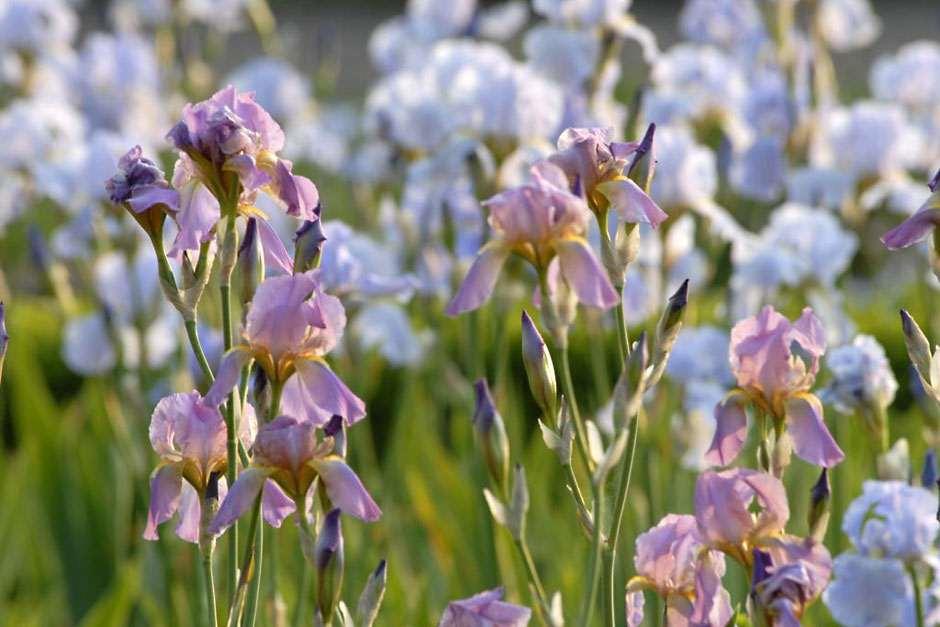 Irises are a signature plant of RHS Partner Garden Doddington Hall, Lincoln, where they have been cultivated in the West Garden since the 1980s. Grown within box- and grass-edged parterres, their sumptuous flowers create a striking tapestry effect in May and early June.
Irises are a signature plant of RHS Partner Garden Doddington Hall, Lincoln, where they have been cultivated in the West Garden since the 1980s. Grown within box- and grass-edged parterres, their sumptuous flowers create a striking tapestry effect in May and early June.
Antony Jarvis – whose family inherited the Doddington Estate in 1830 and still live there – shares how to get the best from these elegant blooms.
‘Bearded iris flowers are held high in the air and their translucence makes them particularly beautiful in the evening light,’ says Antony. ‘They provide a surprisingly long show when well-grown, producing the full number of flowers per stem, and out of season, the foliage makes for attractive groundcover.’
Antony’s favourite bearded irises
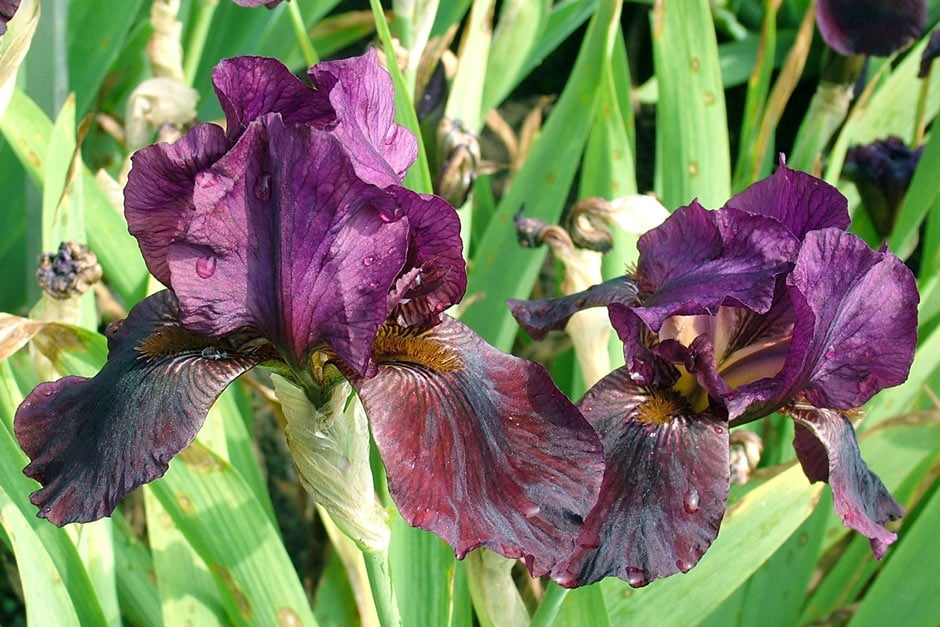 I. ‘Langport Wren’ (pictured) – A wonderful deep mahogany iris, tough and always full of flower
I. ‘Langport Wren’ (pictured) – A wonderful deep mahogany iris, tough and always full of flower- I. ‘Wabash’ – A striking bicolour, sky blue over purple
- I. ‘Ma Mie’ – A delightful unruffled iris bred by Cayeux in 1906
- I. ‘Blue Florentine’ – A very old cultivar, bright French blue and scented
The ‘Doddington system’ of iris division
The garden team finds its ‘Doddington system’ a trouble-free way to divide irises. ‘Irises need an absolute minimum of attention under this system. Some of the older cultivars continue to flourish after 28 years in the same beds,’ says Antony. ‘The key advantages are a regular and full flower display, speed and physical convenience.’
The system is underpinned by two characteristics of iris plants:
- Irises set flower initials in August, determining how many flowers each stem will carry the following May.
- To set the maximum number of flower initials, the plants need to be undisturbed and warmed by sunlight between August and October.
‘The traditional system of autumn thinning every three to four years allows irises to become overcrowded, leading to shading,’ explains Antony. ‘It also disturbs the plants at the very moment they are trying to set flower initials, resulting in an unreliable show of flowers the following year.’
Step-by-step guide:
1. Split the irises every year, after flowering has ended during June. At this point the early summer leaves and flower stems have started to die back, and the late summer leaves have started to grow.
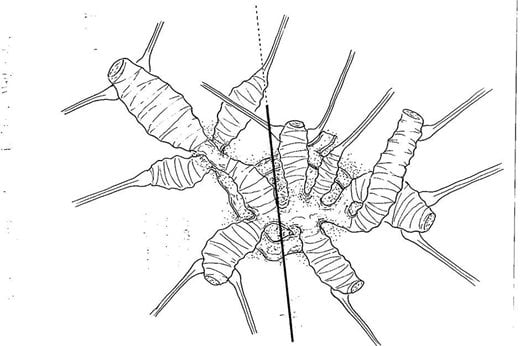 2. Split individual plants by cleaving the rhizomes with a spade, leaving the part to be retained undisturbed in the soil. Remove about 30–50% of the total plant mass – see diagram (right) for an illustration of where to cut. The aim is to leave plants about the size that would fit under an A5 sheet of paper, with a clear space of 25–30cm (9–12in) in all directions between other plants. Irises have a considerable power to colonise bare ground, so don’t be shy with the spade!
2. Split individual plants by cleaving the rhizomes with a spade, leaving the part to be retained undisturbed in the soil. Remove about 30–50% of the total plant mass – see diagram (right) for an illustration of where to cut. The aim is to leave plants about the size that would fit under an A5 sheet of paper, with a clear space of 25–30cm (9–12in) in all directions between other plants. Irises have a considerable power to colonise bare ground, so don’t be shy with the spade!
3. After splitting, cut back the early-summer leaves on the remaining plants, and cut or break off the spent flower stems. Finally, topdress the plants – at Doddington Hall, a dressing of 70–100g per square metre (2–3oz per square yard) of bone meal is raked into the soil between the plants.
4. When deciding which parts of a plant to keep, look for fat, first-year rhizomes with a pair of shoots carrying the early-summer leaves. These are the initials for next summer’s rhizomes and flower stems. Choose rhizomes that point in the direction you wish the plant to move – it advances perhaps 13cm (5in) a year and so can be guided to fill gaps in the overall plant pattern.
5. A major advantage of this system is that the whole job can be done from a standing position, using a light spade and fork and a pair of shears. With no replanting of irises (which is a tricky job to do well), the task of thinning is far quicker than the traditional method.
6. If there is an awkward gap in the iris plants, it might occasionally be necessary to plant a rhizome or two. These, if planted in June, will flower with the rest in the following May.
7. If switching to the Doddington system, you may have a transitional year or two before you reach a steady state. The actual size of the clumps of rhizomes you choose to leave is not critical, and larger clumps can have larger gaps between them.
More growing tips
- For maximum flowers, iris rhizomes need to be warmed by the sun in August and September. Avoid overcrowding of plants as this shades the rhizomes, meaning few or no flowers next year.
- If a bed has looked poor the previous May, try a light mulch of compost in November. Antony finds mushroom compost or Strulch (a straw based mulch) work best.
- Remove late-summer withered leaves when they will pull away from the rhizomes, or they can be left until spring, providing shelter over winter.
- Remove deadheads using shears. This job becomes more important as flowering advances, and finally whole spent flower stems can be removed.
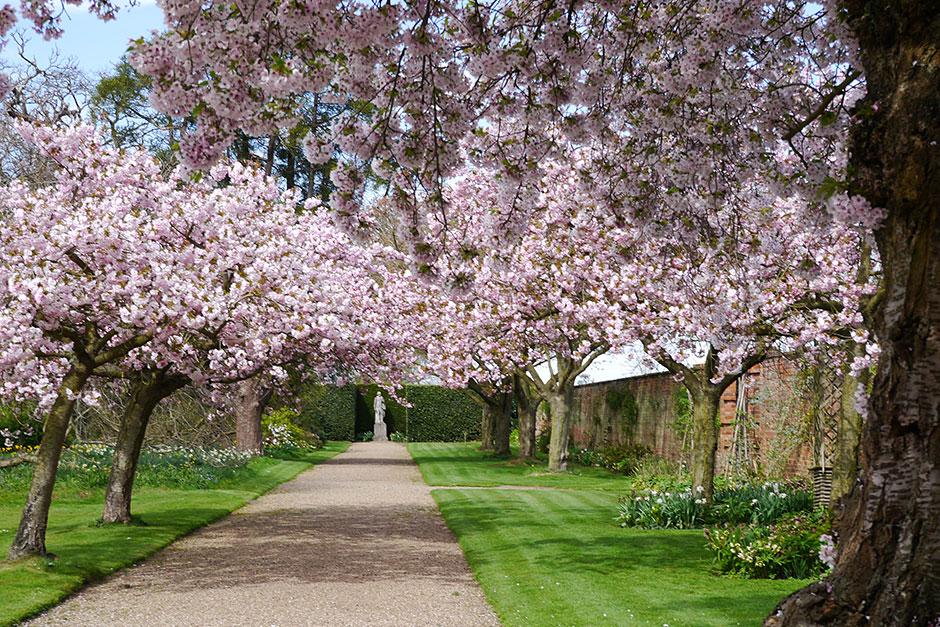 Doddington Hall
Doddington Hall
Doddington Hall is an RHS Partner Garden near Lincoln. A stunning Elizabethan house surrounded by original garden walls. The East Front is simple and formal, while the West Garden is richly planted and peaks in early summer. Spring bulbs are a highlight in the wild gardens along with ancient trees, and there is a productive kitchen garden, too.
Find out more
You may also be interested in...
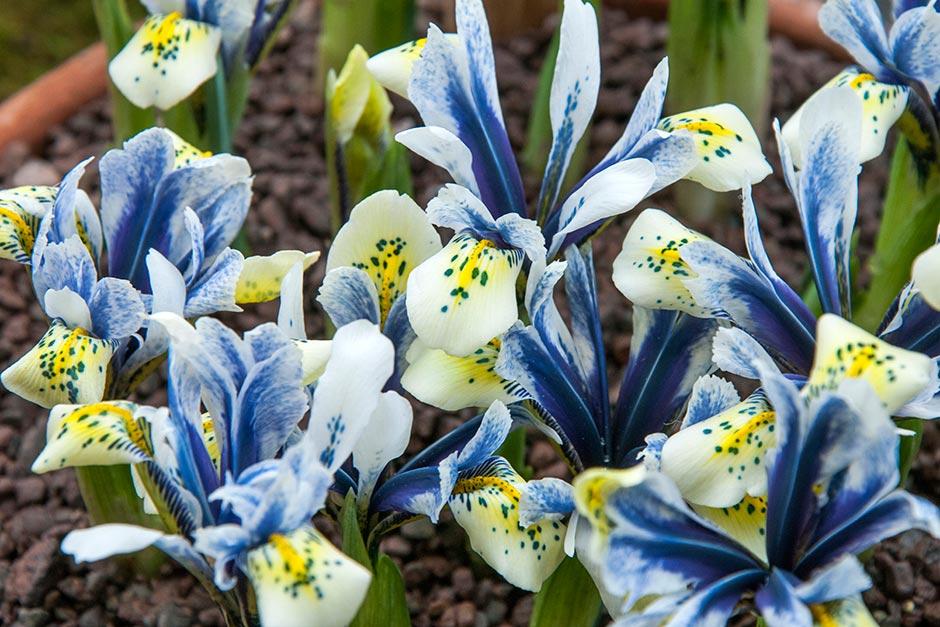 Read more about choosing and growing border irises
Read more about choosing and growing border irises
Everything you need to know about bulbous irises

